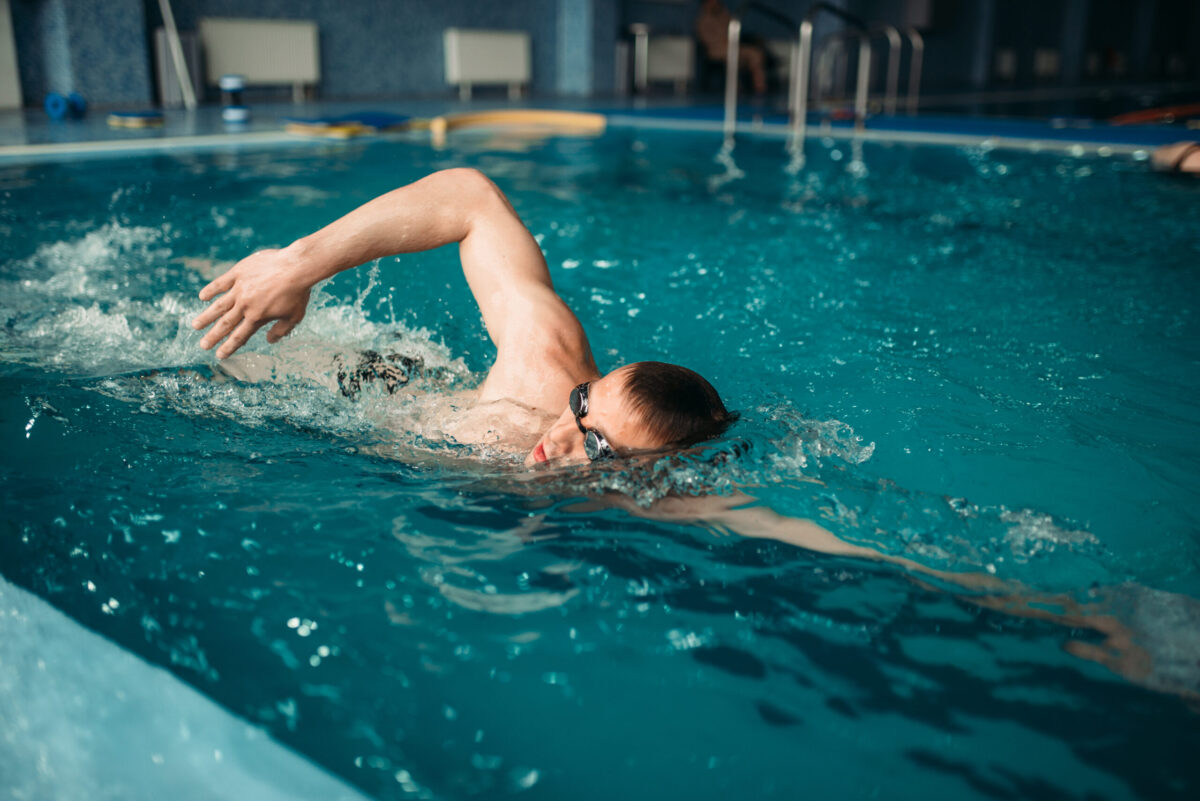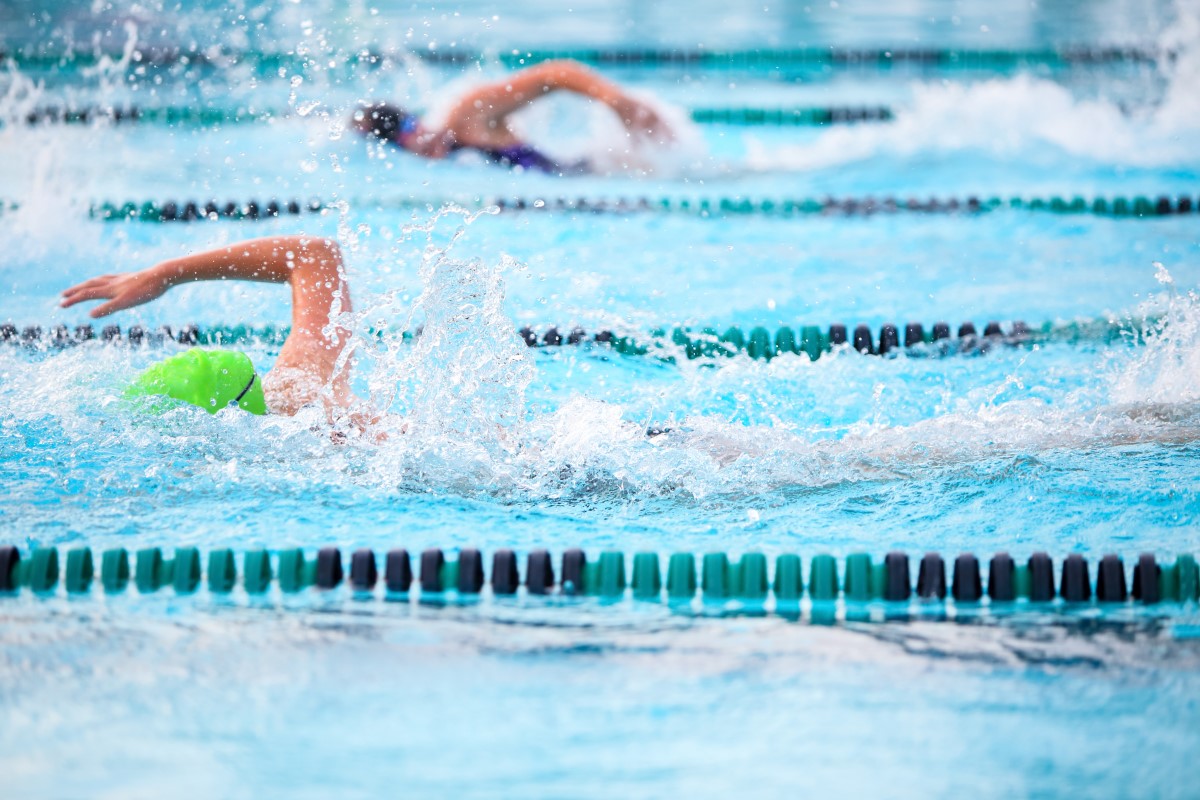
Swimming is a sport that’s great for both the body and the mind! It’s a way to keep active and stay in shape. It’s also helpful to de-stress because your mind is focused on one thing. Swimming is inclusive and even if you are new to it, you can still reap its benefits!
Hopping into the pool on a hot day is always refreshing. It’s a relaxing and fun way to get fit or ease the pain. There are many exercises to try out in the pool including aqua aerobics and brushing up on the various strokes. Summer isn’t the only time to swim though because indoor pools act as a great alternative during the colder months. Below are the top benefits of swimming!
Low-Impact:
Submerging yourself in water up to your neck requires you to bear only 10% of your body weight! In other words, swimming puts minimal stress on your bones and joints. Additionally, Swimming does the following:
- Improves posture
- Protects from injuries
- Doesn’t strain or wear down your joints like other sports
Swimming is a low-impact sport because the water provides only light resistance. This means there isn’t as much pressure placed on your joints. Swimming is done horizontally. This shares similarities to sitting up straight and standing. Injuries happen less often because the shoulders are stabilized while practicing different strokes. Swimming uses a small percentage of your body weight. The sport does not wear down your joints like running or riding a bike does!
Excellent Form of Aerobic Exercise:
When it comes to getting the blood flowing, swimming is the way to go! It teaches the body to use its oxygen better and proves to be a good form of aerobics in these ways:
- The resting heart rate and breath rates work improve
- Gets you active and fit
- Promotes a healthy heart
- Regulates cholesterol
- Decreases the risk of future health issues
Since swimming is an aerobic sport, there is a level of endurance required. Another factor that comes into play is breath control. Having your head come in and out of the water means breathing in a certain rhythm. As a form of physical activity, it gets your heart rate up and reduces cholesterol. It’s a substance found in the blood that helps the body function, but having too much can lead to health conditions such as narrowing arteries and strokes.
Full Body Workout:
Want to keep all your muscles in shape with one form of exercise? Swimming has you covered when it comes to:
- Working out the back, shoulders, arms, legs and torso
- Resistance training as you have to push through the water
- Strengthening and toning muscles
There are multiple strokes to try out when it comes to using swimming as a workout. Each one requires you to use different parts of your body. The butterfly stroke requires swimmers to push themselves forward with their arms, leading with their head and chest. While the breaststroke has the legs moving in and out underwater. Resistance in the water is caused by drag which is when a swimmer uses force to move through the water. This helps build and tone muscles as water is heavier than air meaning it’s harder to get through. 
Strengthens the Lungs:
Making the inside of the body strong is as important as showing off muscles on the outside. Some of the ways that swimming helps the lungs are listed below:
- Increases lung elasticity
- Strengthens the muscles
- The horizontal position expands lung capacity
When it comes to swimming, the best way to build endurance is to improve your breath control. Shipa Gupta and Manish’s study says this allows for the lungs to expand their elasticity and capacity. This is due to you becoming accustomed to holding your breath. Another part of swimming that makes it unique is having to do it in a horizontal position. Standing or sitting up straight allows more air to go into the lungs. Since swimming improves posture too, it supports airflow and makes it easier to breathe.
Increases Flexibility:
Move your body around like you never have before by swimming! The wide range of movement helps with flexibility in many ways including, but not limited to:
- Stretching the arms and legs to stroke
- Working muscles such as the biceps and core
- Warming up before swimming and stretching afterwards
There is a wide range of motion used when you get in the pool for an exercise session. When you swim, you stretch your muscles by lengthening the body to create more powerful strokes. It makes for smoother motions and increases your speed. Some of the muscles exercised include the biceps and triceps as well as the core abdominal and back muscles. Stretches before and after working out ensure that there isn’t pain during or after exercise!
Enjoy Water Sports:
Enjoy a variety of awesome water activities by having basic knowledge of swimming. Some examples are:
- Snorkeling
- Scuba diving
- Sailing
- Surfing
- Kayaking
While snorkelling and scuba diving, you must swim and breathe underwater. Sailing requires upper body strength that can be developed through mastering different swim strokes. When surfing, knowing how to swim your way back to shore comes in handy. Kayaking uses your arms and paddling against the current and wind requires strength that can be developed through water workouts!
Helps Relieve Stress:
Not only does swimming keep you active and fit, but it eases some of life’s stress! Here are some examples of how swimming decreases stress levels:
- The pituitary gland releases endorphins
- Exercise has positive effects on mental health
- It creates a sense of focus
Happy feelings are shown to arise during exercise because swimming is a pain reliever. This is because it’s a low-impact exercise that doesn’t strain the joints. Focusing primarily on the sport’s techniques such as speed, water resistance and breathing can take your mind off of other things. Since swimming uses all of your senses, it creates an atmosphere that’s relaxing and stimulating.
Enrich the Relationships in your Life:
Going for a swim is always more fun to do with some family or friends! It’s a way to stay active and healthy while spending quality time together and has plenty of benefits:
- Lessons are done in a group or one-on-one
- Swimmers support one another
- A way to become more sure of yourself
- Socialization through sport
When you swim together, you stick together! For example, lessons foster interactions between students, peers and instructors. This means making friends or simply getting to know someone new for kids and adults alike. Encouragement from others also allows swimmers to build confidence. This is all due to sharing a common interest in the sport of swimming!


